The number of animals shot in England’s controversial badger cull soared to more than 10,000 this autumn, as part of the government’s attempt to cut tuberculosis (TB) in cattle.
Ministers claimed the result as a success but a leading scientist said there was “no basis” for suggesting the cull was effective, while wildlife charities said badgers were being used as a scapegoat for failures in the intensive livestock industry.
Badger culling was rolled out to seven new areas in 2016, and with ongoing shooting in three other areas, 10 culls took place across Cornwall, Devon, Dorset, Gloucestershire, Herefordshire and Somerset.

A total of 10,866 badgers were killed between August and October, according to government data published on Friday, bringing the overall total to more than 14,800 since culling began in two areas in 2013. Half the badgers killed in 2016 were shot without first being trapped, a method rejected as inhumane by the British Veterinary Association in 2015.
Proposals to extend badger culling beyond the four years originally planned were also published on Friday, as well as wider use of a more accurate blood test for TB in cattle to help prevent herds retaining infectious animals.
TB in cattle is a serious problem for some farmers in England, with 28,000 infected cattle slaughtered in 2015 at a cost of more than £100m a year to taxpayers. An earlier decade-long trial of badger culling found it could “make no meaningful contribution to cattle TB control in Britain”.
However, ministers have remained adamant that changes to culling practices, alongside other measures such as controls on cattle movement, would help to cut TB. But almost all scientists have said the badger cull is very unlikely to work and could make matters worse.
The environment secretary, Andrea Leadsom, also announced on Friday that the government would apply for official TB-free status in 2017 for the half of England where TB is rare, a move that would help farmers sell their beef and dairy products.
“We have much still to do in the worst-affected parts of the country, but this shows that our strategy – combining practical biosecurity measures, a robust cattle movement and testing regime, and badger control in areas where the disease is rife – is right and is working,” said Leadsom.
The chief veterinary officer (CVO), Nigel Gibbens, said the 2016 results showed “culling can deliver the level of effectiveness required to be confident of achieving disease control benefits”.
However, badger expert Prof Rosie Woodroffe from the Zoological Society of London told the Guardian: “There is no basis for drawing any conclusions about the effectiveness of culling.”
Over 70% of badgers in an area must be killed to be sure that the disturbed remaining populations do not range more widely and spread the disease further. But the minimum targets set for badger kills in each area were changed during the culls depending on how many were being shot, being reduced by up to 50% in some places.
“This means that there is really no way to tell what reduction in badger numbers was achieved by these culls,” said Woodroffe. “Culling that was consistently ineffective would look like a low badger density and prompt a reduced target. I would therefore consider the CVO’s conclusion to be based on extremely shaky evidence.”
An independent assessment of the first year of culling found it was neither effective nor humane, but the government then disbanded the expert panel. There is also no evidence that the culls since 2013 have cut TB, although it takes two years for the data to come through. “The government has embarked upon a widespread rollout of badger culling in the absence of firm evidence that this approach can reduce cattle TB,” said Woodroffe.
“We could kill every badger in England but bovine TB would continue to spread in cattle herds due to inaccurate TB testing, excessive numbers of cattle movements and poor biosecurity controls,” said Dominic Dyer, the chief executive of the Badger Trust. “The badger is being used as a scapegoat for failures in the modern intensive livestock industry that have led to a significant increase in bovine TB.”
Claire Bass, the director of the Humane Society International/UK, said: “Badger culling is a costly distraction from the real solution to TB in cattle. It’s a disease of cattle, primarily spread by cattle, and it’s cattle-focused control measures that will stop it. But the government has sanctioned large-scale ‘badgercide’.”
However, the National Farmers’ Union said the latest cull results were a success and it should be rolled out further. “If culling is to have the maximum impact on disease it is vital that it takes place in as much of the area where bovine TB is rife as possible,” said the NFU president, Meurig Raymond. “Farmers continue to play their part in helping tackle this disease through cattle movement controls, cattle testing [and] improving biosecurity on farms.”
The government is proposing that badger culling can continue indefinitely via the granting of five-year licences. However, Woodroffe said it was worrying that the licences would carry less strict conditions than the current culls, heightening the risk of badgers spreading the disease more widely.
The government said it would use badger vaccination to help prevent TB spreading to new areas of England, but could not do so until 2018 due to a global shortage of supply.
This article was first published by The Guardian on 16 Dec 2016.
We invite you to share your opinion whether the slaughter of badgers should be allowed to continue? Please vote and leave your comments at the bottom of this page:
Thank you for voting.
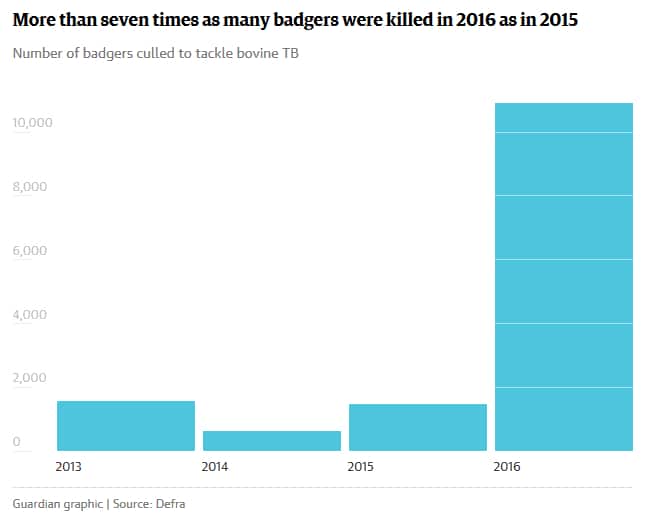
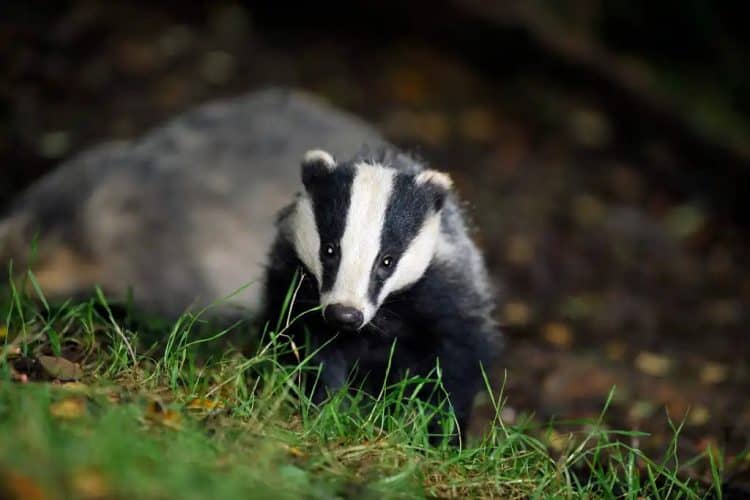
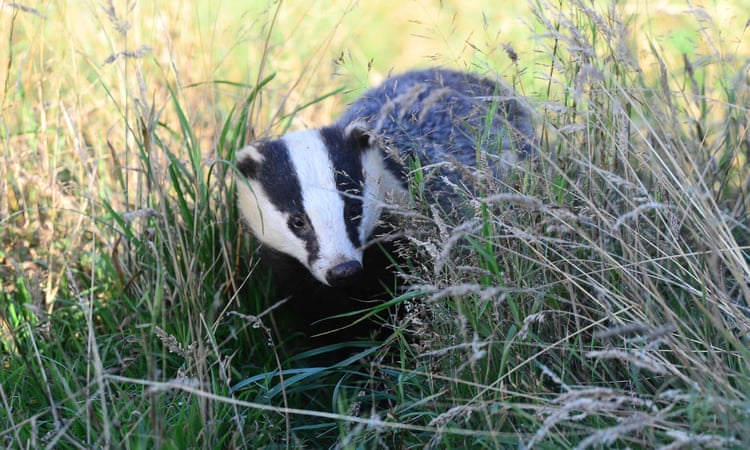

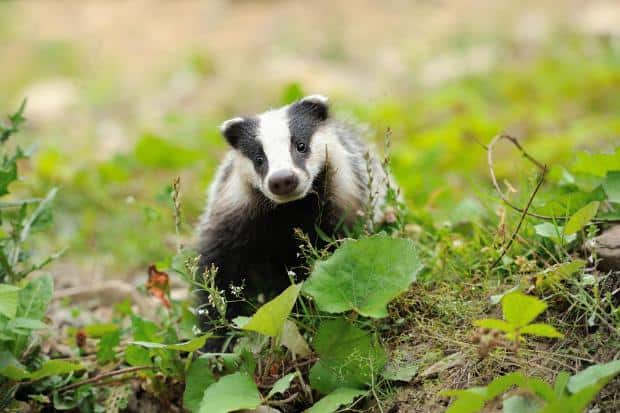
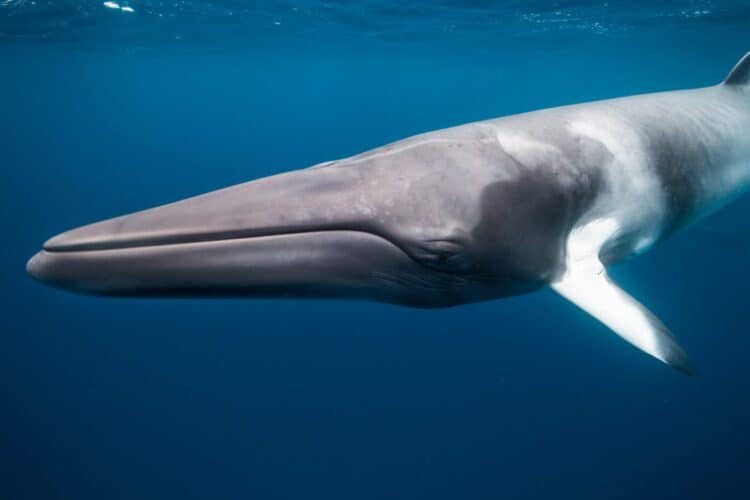
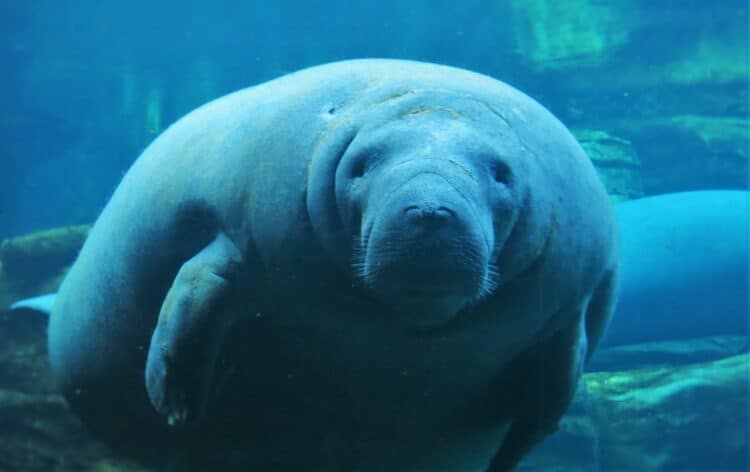
Leave a Reply